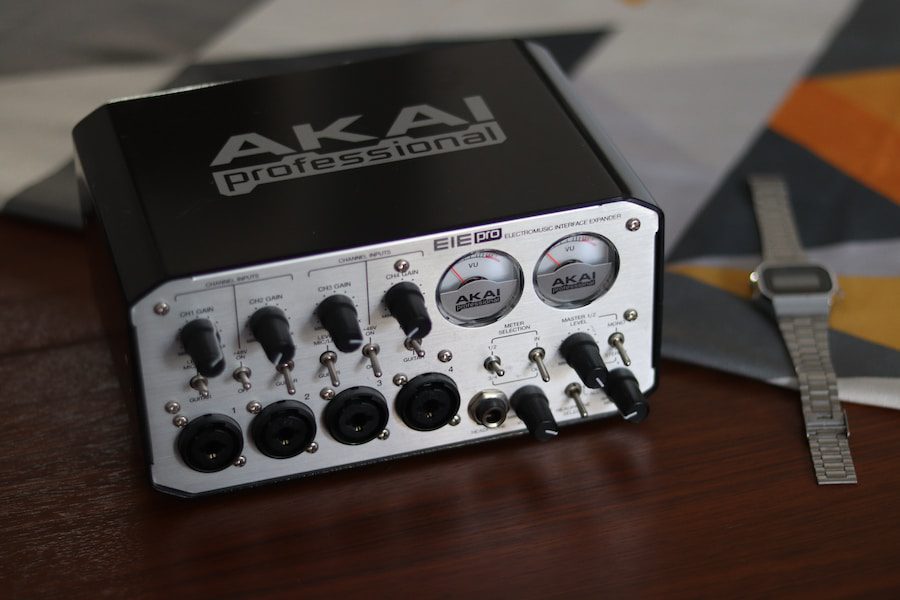When working with audio interfaces, it is essential to safely disconnect and turn off the equipment to prevent damage to the hardware and maintain its longevity. Audio interfaces are essential equipment in audio production, and their proper handling is crucial to ensure the best possible audio quality and performance.
To safely disconnect an audio interface, users should turn off any connected output devices, such as headphones or speakers, or lower their volume to the minimum. This helps to avoid any potential audio feedback or unexpected noise that may cause potential harm to the audio interface or other connected devices. Additionally, users should follow appropriate hardware removal procedures specific to their computer’s operating system, such as using the Safely Remove Hardware feature in Windows.
Furthermore, it is essential to be aware of the different types of audio interfaces and their specific requirements for safe disconnection, as some interfaces, such as FireWire, are hot-pluggable. In contrast, others may require specific shutdown procedures. Ultimately, users can ensure the device’s functionality and protect it from potential harm by properly powering off and disconnecting an audio interface.
Table of Contents
- What Are Audio Interfaces
- Reasons to Safely Disconnect Audio Interfaces
- Preparing for Disconnection
- Proper Disconnection Procedure
- Reconnecting the Audio Interface
- Troubleshooting Common Issues
- Final Thoughts on Safely Disconnecting an Audio Interface

What Are Audio Interfaces
An audio interface is a device that enables audio signals to be sent in and out of a computer. Professional musicians, podcasters, and content creators often rely on these tools to record or convert audio signals into digital formats, which can be easily processed and stored on a computer. Audio interfaces are considered advanced versions of computer sound cards designed to handle multiple audio inputs and outputs simultaneously.
When choosing an audio interface, there are several factors to consider. First, the number of inputs and outputs required for the specific use case. Audio interfaces like XLR, TRS, and RCA have various connection types to accommodate different audio sources, including microphones and musical instruments. Additionally, audio interfaces may offer options for digital audio conversion, latency, and overall audio quality.
Some audio interfaces are designed to work with others, allowing users to combine multiple devices to form one large interface with pooled inputs and outputs effectively. This can be particularly useful for those who need additional audio channels or are searching for specific features and functionality.
Reasons to Safely Disconnect Audio Interfaces
There are several reasons why it is crucial to disconnect audio interfaces safely. One of the primary reasons is to protect the device and its components from damage. Improper disconnection can potentially result in electrical issues, such as shorts or surges.
Another reason to safely disconnect an audio interface is to prevent data corruption. When an interface is removed without properly shutting it down, the communication between the computer and the device could be disrupted. This might lead to the loss or corruption of recorded audio files or, in some cases, a permanently damaged interface.
User safety is another vital aspect to consider, as improper disconnection or sudden removal of an audio interface might cause unexpected loud noises or feedback, potentially harming listeners’ ears or damaging speakers and equipment. Safely disconnecting ensures that the device is powered off, thus minimizing the risk of such occurrences.
Furthermore, ensuring proper disconnection procedures helps extend the lifespan of the audio interface and connected devices, such as headphones, speakers, and mixers. Unplugging an interface may lead to wear and tear on the device’s ports and the cables themselves, which may require costly replacements over time.
In summary, taking the time to disconnect an audio interface safely plays a vital role in protecting the device and its components from damage, preventing data corruption and user injury, and extending the equipment’s overall lifespan.
Preparing for Disconnection
Disconnecting an audio interface safely is crucial to prevent damage to the device and any connected equipment. Before disconnecting, take the necessary steps to ensure a smooth and trouble-free process.
Saving Your Work
First and foremost, save any ongoing projects or files you have been working on. This prevents potential loss of data and any unexpected issues during disconnection. Consider the following steps:
- Save your project in the audio workstation software you are using.
- Export any necessary files in the appropriate formats.
- Back up your work to an external drive or cloud storage for added security.
Closing Software Applications
Close any software applications using the audio interface before attempting to disconnect it. This helps in preventing software crashes and improper disconnections. To close software applications safely, follow these steps:
- Close your digital audio workstation (DAW) or recording software.
- Terminate any additional audio applications or plugins that might be running.
- Check the system tray, task manager (on Windows), or Activity Monitor (on macOS) to ensure no related processes run in the background.
After completing these steps, you can confidently proceed to the disconnection process, knowing that your work is secure and your equipment is safe from harm.
Proper Disconnection Procedure
Powering Off the Audio Interface
Before unplugging any cables, it is essential to power off the audio interface to prevent potential damage to the device or the connected equipment. To do this, locate the power button or switch on the interface, which is usually found on the front or rear panel, and turn it off. Wait for any LED lights or power indicators to go off, indicating the device no longer receives power. Ensure that any software being used with the interface is closed.
Unplugging Cables and Connectors
Once the audio interface is powered off, it is time to disconnect the cables and connectors from the device. Handling cables and connectors carefully is crucial to avoid damaging them or the equipment they are connected to. Make sure to grasp the connector or plug instead of pulling on the cable to minimize strain and potential damage to both the cable and the interface.
For USB connections, follow these steps to remove the device safely:
- If available, click the Safely Remove Hardware icon in the system tray or taskbar corner overflow.
- Select the audio interface from the list of devices.
- Wait for a notification confirming that it is safe to remove the device.
- Grasp the USB connector and pull it straight out from the interface.
For interconnects with RCA terminations, gently grasp the connector and rotate it slightly clockwise while pulling it out. For XLR cables, locate the lock or latch mechanism on the connector, depress it, and pull the connector straight out from the interface.
When all cables have been removed, neatly store them to prevent tangles and maintain longevity. Make a habit of following this procedure every time you disconnect your audio interface to ensure the safety of both the device and the connected equipment.
Reconnecting the Audio Interface
Reconnecting an audio interface to your computer system can be done in a few simple steps. It is essential to follow these steps carefully to ensure the audio interface’s proper functioning and avoid any potential issues.
First, ensure your computer is powered off before reconnecting the audio interface. This can help avoid potential damage to the audio interface and minimize any disruptions to audio processing.
Next, connect the audio interface to your computer using the appropriate connection method: USB, FireWire, or Thunderbolt. Ensure the connection is secure, and use the recommended cables for your particular audio interface.
Power on the audio interface by turning on any switches or buttons on the device, if applicable. Some audio interfaces may not have a dedicated power switch and will automatically power on when connected to the computer.
Once the audio interface is connected and powered on, power on your computer. After your computer has fully booted up, it should recognize the audio interface and automatically reinstall any necessary drivers. Sometimes, you may need to manually reinstall the audio device drivers by following the manufacturer’s instructions.
If you are using Windows 10, it is recommended to use the ASIO4All driver for optimal compatibility and performance with audio interfaces. This can be downloaded and installed from the ASIO4All website.
After the drivers have been installed, your audio interface should be fully functional and ready for use.
Troubleshooting Common Issues
No Sound After Reconnection
If you experience no sound after reconnecting your audio interface, follow these steps to troubleshoot the issue:
- Check your cables, plugs, jacks, volume, speaker, and headphone connections to ensure they are securely connected.
- Verify that your audio interface is the default playback device in your computer’s sound settings.
- Restart your computer and audio interface to refresh the connection.
- Update your audio interface drivers and ensure all Windows Updates are installed.
Software Not Recognizing the Interface
When your software doesn’t recognize the audio interface, it can prevent you from accomplishing tasks such as recording or editing audio. To resolve this issue, consider the following steps:
| Step | Action |
|---|---|
| 1 | Ensure that your audio interface is compatible with your software and computer operating system. |
| 2 | Check that your audio interface drivers are up to date. |
| 3 | Ensure your audio interface is compatible with your software and computer operating system. |
| 4 | Verify that the software’s audio preferences are set to use the correct audio interface as the input and output device. |
| 5 | Consult the software’s documentation or support resources for compatibility or configuration recommendations. |
Following these troubleshooting steps, you can help ensure your audio interface and software function together seamlessly.
Final Thoughts on Safely Disconnecting an Audio Interface
Following these steps, you can properly disconnect and reconnect your audio interface to ensure optimal performance. Additionally, when troubleshooting any issues with the device, it is essential to follow the recommendations of the audio interface’s manufacturer for best results. With some care and patience, your audio interface should continue to provide top-notch audio performance.
Finally, remember to properly store your audio interface when not in use and never leave it connected to a computer powered off. This can help avoid potential damage or disruption and ensure your audio setup remains high quality for years.
- Review of the ALABS IRON MINI-WL: A Powerhouse Wireless Microphone - October 4, 2023
- What is a Saturator in Music Production: A Brief Explanation - May 11, 2023
- What Are Rotary DJ Mixers? An Overview - May 11, 2023
SoundStudiomagic.com is a participant in the Amazon Services LLC Associates Program, an affiliate advertising program designed to provide a means for sites to earn advertising fees by advertising and linking to Amazon.com. We also participate in other affiliate programs which compensate us for referring traffic.

